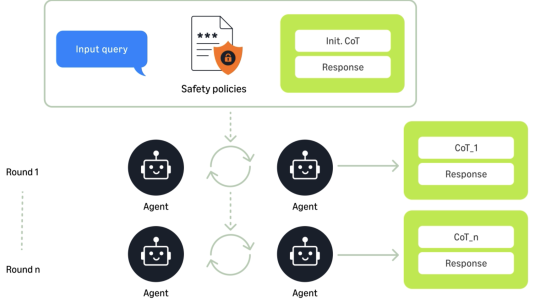Customer-obsessed science


Research areas
-
July 31, 2025Using ensembles of agents to generate and refine interactions annotated with chains of thought improves performance on a battery of benchmarks by an average of 29%.
Featured news
-
2024Recent advances in tabular data generation have greatly enhanced synthetic data quality. However, extending diffusion models to tabular data is challenging due to the intricately varied distributions and a blend of data types of tabular data. This paper introduces TABSYN, a methodology that synthesizes tabular data by leveraging a diffusion model within a variational autoencoder (VAE) crafted latent space
-
Picture Coding Symposium 20242024Deep learning-based video quality assessment (deep VQA) has demonstrated significant potential in surpassing conventional metrics, with promising improvements in terms of correlation with human perception. However, the practical deployment of such deep VQA models is often limited due to their high computational complexity and large memory requirements. To address this issue, we aim to significantly reduce
-
Picture Coding Symposium 20242024Professionally generated content (PGC) streamed online can contain visual artefacts that degrade the quality of user experience. These artefacts arise from different stages of the streaming pipeline, including acquisition, post-production, compression, and transmission. To better guide streaming ex-perience enhancement, it is important to detect specific artefacts at the user end in the absence of a pristine
-
2024The angular synchronization problem aims to accurately estimate (up to a constant additive phase) a set of unknown angles θ1, . . . , θn ∈ [0, 2π) from m noisy measurements of their offsets θi–θj mod 2π. Applications include, for example, sensor network localization, phase retrieval, and distributed clock synchronization. An extension of the problem to the heterogeneous setting (dubbed k-synchronization
-
Journal of the Acoustical Society of America2024We propose a personalization framework to adapt compact models to test time environments and improve their speech enhancement performance in noisy and reverberant conditions. The use-cases are when the end-user device encounters only one or a few speakers and noise types that tend to reoccur in the specific acoustic environment. Hence, we postulate a small personalized model that suffices to handle this
Academia
View allWhether you're a faculty member or student, there are number of ways you can engage with Amazon.
View all





























